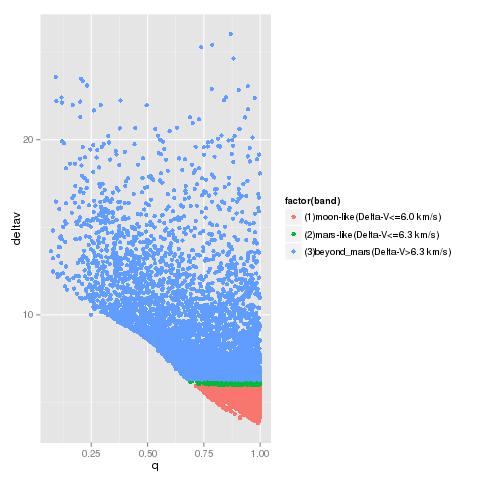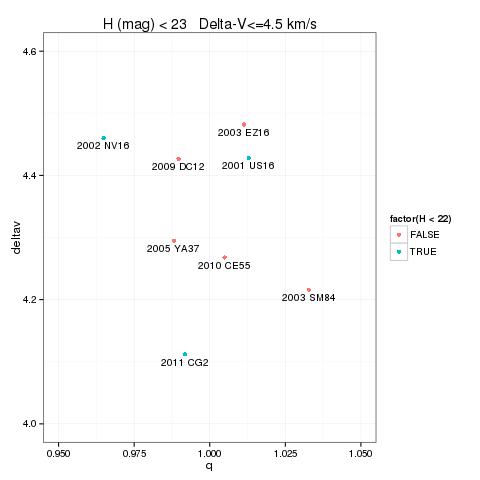Asteroid 2017 DQ15 is a NEO (Apollo) displayed in the list of objects with a comet-like orbit maintained by Y. Fernandez.
Orbital Elements at Epoch 2458000.5 (2017-Sep-04.0) TDB
Reference: JPL 7 (heliocentric ecliptic J2000)
Reference: JPL 7 (heliocentric ecliptic J2000)
|
Orbit Determination Parameters
Additional Information
|
Based on the nominal orbital parameters and uncertainty, I generated 100 clones with an R script and then I used the Mercury6 simulator by J.E. Chambers to investigate what happened in the last 10^8 days.
Mercury6 simulator: configuration
More about the program "A Hybrid Symplectic Integrator that Permits Close Encounters between Massive Bodies'' can be found here.
Main integration parameters:
Algorithm: Bulirsch-Stoer (conservative systems)
Integration start epoch: 2458000.5000000 days
Integration stop epoch: -10^8 days
Output interval: 100.000 days
Output precision: medium
Initial timestep: 0.100 days
Accuracy parameter: 1.0000E-12
Ejection distance: 1.0000E+02 AU
Algorithm: Bulirsch-Stoer (conservative systems)
Integration start epoch: 2458000.5000000 days
Integration stop epoch: -10^8 days
Output interval: 100.000 days
Output precision: medium
Initial timestep: 0.100 days
Accuracy parameter: 1.0000E-12
Ejection distance: 1.0000E+02 AU
Simulation results
As seen above, the "ejection distance" used to claim that an asteroid has arrived from the outskirts of the solar system is 100 AU.
The simulation shows that there is a good likelyhood that the asteroid has a cometary origin:
- 47 out of 100 clones arrived from a distance greater than 100 AU in the last 10^8 days
- 4 out of 100 clones would have "collided" with the sun
The most recent arrival time was about 7906 B.C.
The mean arrival time was about 139274 B.C.
The less recent arrival time was about 268318 B.C.
The arrival time distribution of the 47 clones that were likely to be comets is shown below:
Kind Regards,
Alessandro Odasso










